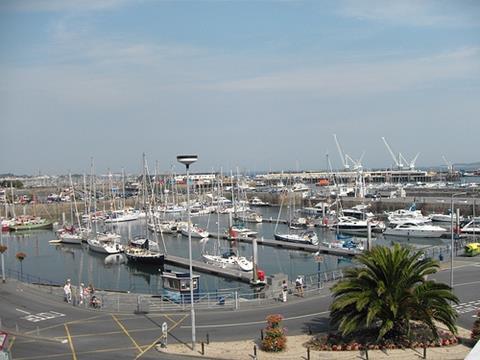What effect is the uncertainty surrounding the implementation of Solvency II having on the captive industry?
Stuck in no man’s land
With further delays to the plenary vote on Omnibus II, the implementation date of 1 January 2014 looks increasingly unlikely. The European parliament has rescheduled the vote that will decide many of the finer details of the regulation from 20 November 2012 to March 2013. On 17 October 2012, the European Insurance and Occupational Pensions Authority chairman Gabriel Bernardino admitted in an interview that, under the best scenario, Solvency II (SII) could begin to be implemented in either 2015, or more likely in 2016.
Until the Omnibus II vote takes place, the level 2 delegated acts spelling out how captives will be regulated are unlikely to appear.
Kane group chief operating officer Clive James says: “I was in Luxembourg in November and 75% of discussions revolved around SII being delayed.
“With captives, there is a concern in terms of whether they are going to be treated differently from a proportionality perspective. There’s still no definitive answer because a lot of captives are so different.
“It’s difficult enough to establish captives because there is a huge initial capital investment and having SII as a formation blocker does cause concerns,” says James. “Captives will still be formed in EU domiciles but this continues to be an issue.”
In theory, captives will receive proportional treatment under SII and will not be regulated as onerously as large diversified commercial insurance companies. However, certain business profiles will do better under the legislation than others. Small to medium-sized, single-risk captives are expecting a heavier cost burden, both in terms of capital requirements and reporting, and governance overheads.
Aon Global Risk Consulting chief operating officer and head of risk finance Charles Winter says: “SII wasn’t designed for captives.
“Captive owners weren’t consulted as part of the construction of the framework in the same way some of the smaller insurers haven’t had a voice in how SII was designed and implemented. The regulatory structure is a one-size-fits-all and the commercial market, which has by far the bigger volumes and protection issues, is always going to be the driver for what is put in place.
“The important thing is trying to get what concessions there are.
“Proportionality is going to be one aspect of what differentiates captives from large commercial insurers - that’s what you need based on the fact your protection remit is much different.”
One size does not fit all
Insurance entities must have gross premium income exceeding €5m or gross technical provisions in excess of €25m to fall within the scope of SII. Very small captives and cell companies will not meet this requirement. Larger captives are likely to be sufficiently capitalised to meet the requirements under SII’s standard formula.
Larger captives are also likely to have the infrastructure in place to meet the reporting and compliance requirements.
Marsh Risk Consulting France managing director Marc Paasch says: “We did a test with 60 captives in Luxembourg on the basic solvency capital requirements and only 20% of these captives were in the grey zone or had insufficient capital to cover the risk, so 80% were fine.
“It’s too early to see an effect for existing captives, but it’s an area for formation of new captives,” he continues. “Clients will look at it on the cost side. Post-SII implementation means more running costs and potentially higher capital needs than under Solvency I, so this is definitely taken into account. And because of the uncertainty and potentially higher running costs under Pillar II, it could make some other domiciles look quite attractive.”
However, there is little evidence that SII is affecting captive numbers in Europe. Although it can be argued that fewer captives are being formed as a result of the uncertainty surrounding the regime, the prediction that many captives would leave Europe for non-EU domiciles or closure of entities has not come to pass.
Winter says: “The QIS5 studies were done over two years ago now, and a few of those revealed profiles of captive that were going to have problems, such as those heavily reliant on other captives in a lot of different regimes.
“So work has started to look at alternatives. But have we seen a wholesale retreat, shedding of portfolios and closure of captives due to SII? No.”
Captive owners continue to assess the implications of the regime and make the necessary preparations, with options including reinsurance stop losses and greater diversification from an asset and underwriting perspective. But it is clear SII is set to have a lasting effect in Europe and beyond, particularly while uncertainty over its implementation persists.
James says: “Guernsey pushes itself to say, ‘We’re outside the SII area’, which is fine.
“But, if somewhere along the chain, something goes through the EU, we’re always going to be caught up in it, whether it’s fronted out of the EU or out of the UK. Then SII issues are going to hit because the capital charges will go up and we’ve seen evidence of prices going up for capital charges for fronting insurers anyway.”
Unpicking growth
A year ago, many predicted that the heavy catastrophe loss burden in 2011 would drive higher (re)insurance rates in the traditional property catastrophe market, boosting demand for captive insurance. Rates were anticipated to increase on loss-hit lines of business, including property, business interruption and supply chain. However, despite costing the industry more than $100bn (€76bn) in claims, the legacy of the Japanese earthquake and tsunami, Christchurch earthquakes, Thai floods and other disasters have been short lived.
Even Cyclone Sandy is set to be an earnings, and not a capital event. Some of the biggest global reinsurers have increased their profit guidance for 2012, in spite of the expected Sandy claims. While traditional cover remains restricted or expensive in some pockets, the commercial insurance market retains plenty of capacity.
With its fate still closely linked to the insurance cycle, captive growth in 2012 has remained muted. Other factors, including the continued uncertainty surrounding Solvency II in Europe, soft rates in emerging markets and high levels of saturation in mature captives markets have also conspired against high rates of formation.
Nevertheless, some drip-feed activity is taking place. Marsh Risk Consulting managing director Marc Paasch says: “Some large organisations still haven’t [set up a captive] and are contemplating it.
“There is still room to have some more, and we’re working with some large organisations that don’t have any captives and they are contemplating creating one.”
Reasons driving captive growth
Against this backdrop, the reasons for setting up a captive in 2012 are varied. Beyond pockets of growth, the picture is flat but stable. US onshore activity and high rates of cell formation in domiciles such as Guernsey and Bermuda are some of these pockets.
New structures, including special purpose vehicles to transform capital market products into insurance products, are becoming popular for captive owners with big exposures. Employee benefits are gaining popularity for offshore captive owners, with many appointing an offshore fronting insurer.
Some multinationals that have not yet explored the captive concept find they present efficient and effective risk financial mechanisms, regardless of the cost of insurance from the traditional market. Moreover, many captive owners are looking to put new lines of business through their vehicle or even taking on third-party business. This can help diversify risks, lower costs and bring tax advantages.
Kane group chief operating officer Clive James says: “The reason why the captive market has continued to grow over the past five or 10 years is more driven by risk management processes and philosophy than the insurance cycle.
“Other issues - new regulations, tax and accounting - are affecting growth. I met potential clients recently and each is looking at setting up a captive because of the unique circumstances of their company.
“Obviously, if the insurance market hardened we would see significant captive growth,” he adds. “But [captives] are still growing and expanding, and many are expanding their portfolios.”
Some multinationals with existing captives may set up a new entity as part of corporate restructuring - or because they have reached a capacity ceiling in their existing captive.
Medium-sized organisations may explore some of the newer risk retention vehicles, including protected cell companies, which offer lower set-up and operational costs.
Aon Global Risk Consulting chief operating officer and head of risk finance Charles Winter thinks the fundamentals driving new captive formations are unlikely to change.
He says: “Large organisations no longer insure down to very low levels - that will remain a feature regardless of the market cycles. Once you’ve got a substantial retention carried, the bigger companies need to find something that manages that retention, and the captive continues to play a role regardless of the market cycle.”
He notes that while captive numbers keep going up globally, albeit at a modest rate, most of that growth is driven by the US middle market rather than the traditional large corporate sector. “Where we’ve seen activity, it’s tended to be driven by unusual risks,” Winter says. “Property/casualty is not quite the driver it was. Trade credit crops up as something that is looked at separately from some of the other risk classes.” Corporate restructure and new territories, including Turkey and Mexico, are also on his list.
AIG head of continental European risk management Jonathan Groves thinks that domicile-specific reasons are also driving captive growth in markets such as Malta and Luxembourg.
“There’s the very traditional multinational programme wanting to even out the level of retentions - that is still an underlying rationale for formation. … The other reasons for captive formation tend to be client-specific - if they’ve got a particular issue they’re trying to address - but they are very individual reasons.
“To the extent we see a hardening market in any particular location or line of business, you’ll see captive formations accelerate,” he adds. “The best example of that over the past four or five years is hurricane-exposed property in the USA.”
New and emerging risks
In addition to US property catastrophe and other traditional captive lines of business, some of the more exotic risks being put through captives include non-damage business interruption, environmental liability, employee benefits, supply chain risks and contingent business interruption, data protection, cyber liability and reputational risks, trade credit and political risks among others.
Paasch says: “We’re seeing some new risks that are difficult to manage in the traditional insurance market, such as specific environmental liabilities, political risks, reputational risks - and these new risks can be well managed in a captive.
“In the current environment, some of the credit insurers have stopped or limited the limits on some exposures in countries particularly hit by the crisis. We’re also seeing some demand on cyber - which is emerging - because that’s become a focus of some clients’ risk management.”
While many captive owners are expanding existing captive vehicles only to cater for some of these new risk classes, in other instances they lend themselves to new captive formations.
Paasch says: “We’ve seen formation of specific captives, especially in the employee benefit field, with clients looking at having a separate captive or a new captive.
“This could be a starting trend - something that is more worthwhile for large groups with an international presence. Part of these risks could be kept within the captive - life and disability, medical, and personal accident: one of those or all three.”
Debating domiciles
The rate of saturation in mature captive domiciles led many managers to focus on emerging markets in recent years. The BRIC economies, the Middle East and other developing economies in Asia, Latin America and Europe were anticipated to fuel demand for captives as risk management became more sophisticated and insurance markets developed.
It is early days for these developing captive markets. Seventy per cent of captive owners are in the Americas, according to Marsh’s 2012 Global Captive Benchmarking Report. This is followed by EMEA, with 24%, and Asia Pacific, with 6%. The report notes that developing nations are increasingly seeking to “formalise their risk financing arrangements, particularly in the Middle East and Latin America”.
Growing expansion
AIG head of continental European risk management Jonathan Groves says: “Some say we’re seeing a lot of activity and interest from emerging markets, whether in Latin America, the Far East or China. I just don’t see it.
“That’s because the market for the longest time in those locations has traditionally operated on a ground-up basis with low premium rates that don’t necessarily reflect the risks. There’s been a lot of development work in places like the Middle East.
“We’ve seen Dubai, Bahrain and Qatar all pushing captive locations and regulators marketing independent organisations financed by the governments. Then, you have a look at the captive numbers in Dubai and Bahrain and, between them, they have less than five captives.
“Some of the major [emerging market] multinationals that have expanded overseas have significant property and they’re still not doing it. In places like Mexico, companies are setting up captives in Luxembourg, so there is more activity in Latin America, but it’s very small numbers.”
The main complaint in emerging markets is that pricing in the traditional market remains soft, reflecting high competition and low regulation. Multinationals can buy cheap insurance in the commercial market, but they have little incentive to self-insure and emerging captive domiciles fail to gain traction.
“Some markets are coming through that lend themselves to [captive insurance] and you need to look further beyond the BRIC countries,” Kane group chief operating officer Clive James says. “There are certain sectors in Asia potentially, but as insurance has always been relatively cheap in Asia, it’s never been a huge captive growth area. But where you will see growth is, as certain companies expand globally a captive comes part of that process whether that’s Asia, Africa or South America. The challenge is the insurance laws and restrictions, and how premiums can be moved in and out of a country.”
Marsh’s report pointed out that foreign organisations increasingly undertake international construction projects in emerging markets, where insurance restrictions are a challenge. It noted: “We are seeing a marked increase in consideration of new captive formation in financial centres such as Dubai, Qatar and Bahrain.”
Turkey is becoming an interesting market for captive managers, given its huge construction and contracting industry. Aon Global Risk Consulting chief operating officer and head of risk finance Charles Winter says: “As business become more international in outlook and geographical spread, and as they get to a critical mass level, US and European best practice becomes embedded within those organisations. Captives are one of the tools they’ll look at to achieve their objectives, and you’d expect that trend to continue.
“There may be more inquiries from the eastern hemisphere than the west, but there is activity in both.”
Winning business
Captive legislation on its own does not create a market, even if its geographical proximity is a benefit. “What will a new jurisdiction offer over and above the ones that have a developed infrastructure and a track record?” asks Winter. “Unless they can offer something specific, such as access to market and timezone, what will the driver be?”
Some domiciles have built a market based on their unique location, such as Micronesia with its bid to attract captive business from Japan. In reality, the majority struggle to win business away from established captive domiciles. Latin American multinationals are not setting up captives in their home market. They are looking to Bermuda, Barbados and European captive domiciles such as Luxembourg to establish their self-insurance vehicles, particularly where favourable tax agreements exist.





















No comments yet